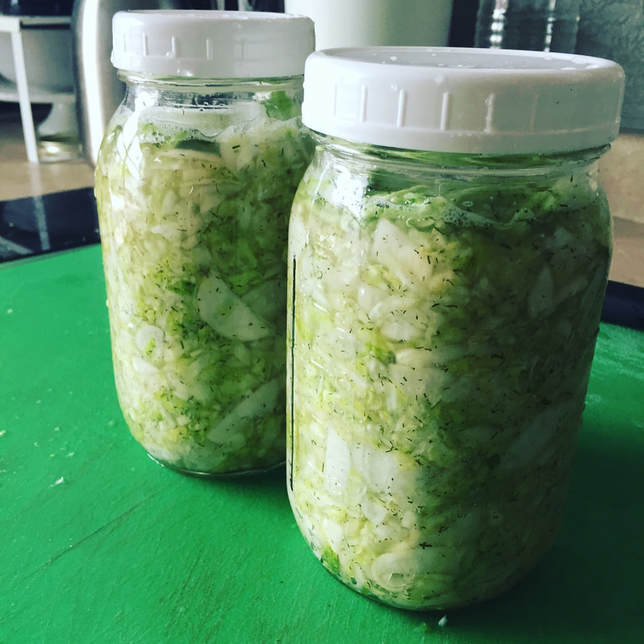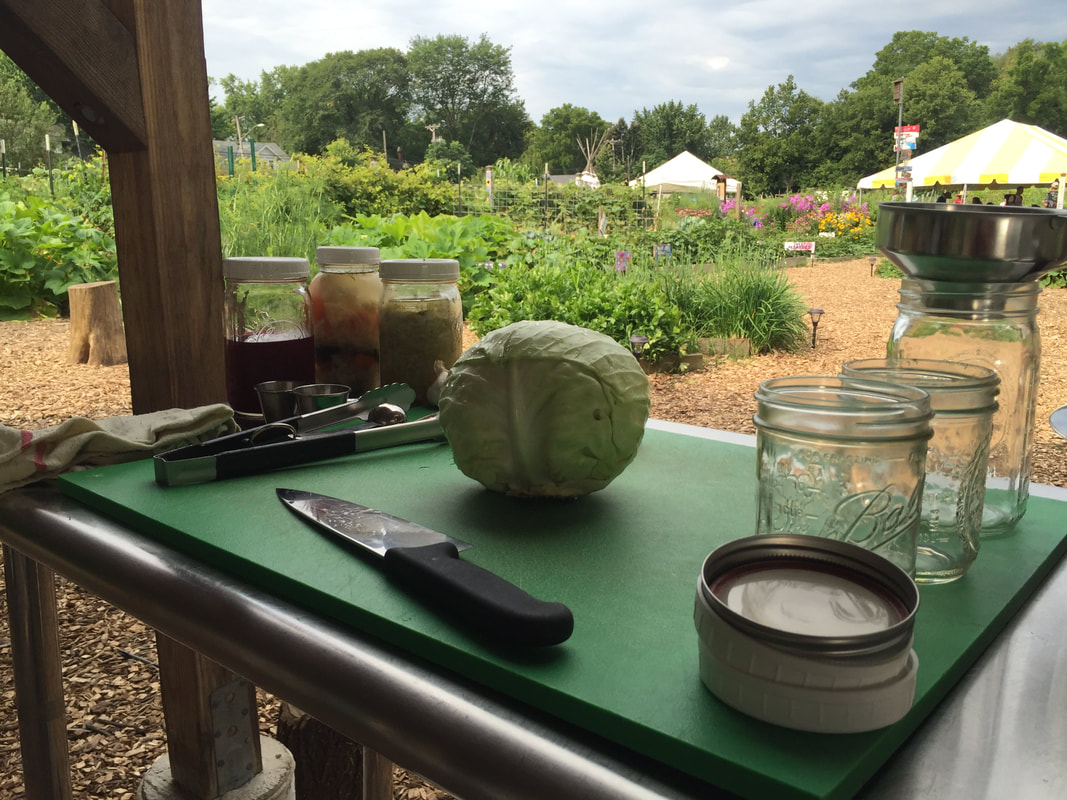|
Cabbage is pretty much the perfect vegetable to ferment. It has a high water content to help create the brine, and it is fibrous enough to maintain its structure even when massaged, crushed, and compressed in the fermentation process. But cabbage isn't the only fermentation star: turnips also make a fantastic ferment. Sauerruben is sauerkraut's even stinkier cousin, made with either all or some turnips. I love the small white turnips that are tender and a little sweet. When combined with cabbage, some garlic and fresh dill, you get a delicious ferment that is packed with probiotics and flavor. I made this recipe for a workshop I taught this past weekend at the Wisconsin Permaculture Convergence. This annual conference of awesome folks was held this year at the Troy Community Gardens in Madison, Wisconsin. This sauerruben was a hit, and now you can make it, too! Feel free to use more or less turnips depending on what you've got and how much you like them. You could even try it with only turnips and see how that goes.
Sauerruben with Garlic and Fresh Dill Makes ~2 quarts 1 medium head cabbage, 2-3 lbs 2 lbs small white turnips, thinly sliced 6 cloves garlic, minced 1/2 cup fresh dill, chopped Unrefined sea salt--use 1 Tbs salt per 3 lbs vegetables Combine the shredded cabbage and sliced turnips in a large bowl. Add salt and massage into the vegetables until they become soften and release some of their water. Add in the garlic and dill, and mix well. Transfer the mixture into glass jars, or a ceramic fermenting crock, and pack tightly to remove all air and push the brine to the top. If desired, add a glass fermenting weight (I use Pickle Pebbles) to the top to ensure the vegetables stay submerged below the brine--this is what helps prevent mold and ensure proper lacto-fermentation, which is anaerobic. Put a lid on the jars, if using, and tighten just enough to close, but not too tightly. The ferment will produce CO2 as a by-product, so a too-tight lid could cause the jar to break or explode. Let sit at room temperature for 7-14 days, depending on how fermented and tangy you like your veggies. If your house is warmer, it will ferment faster, so keep an eye on it. Check regularly to ensure the veggies stay below the brine and that mold is not forming. Transfer to the fridge for long-term storage. This should keep at least 1 year under refrigeration.
0 Comments
Leave a Reply. |
Brine & Broth
I am a gut health-focused nutritionist and online health coach based in Southwest Wisconsin. My recipes and philosophies center around traditional, nutrient-dense foods that support robust gut health. Archives
May 2022
Categories |



 RSS Feed
RSS Feed
